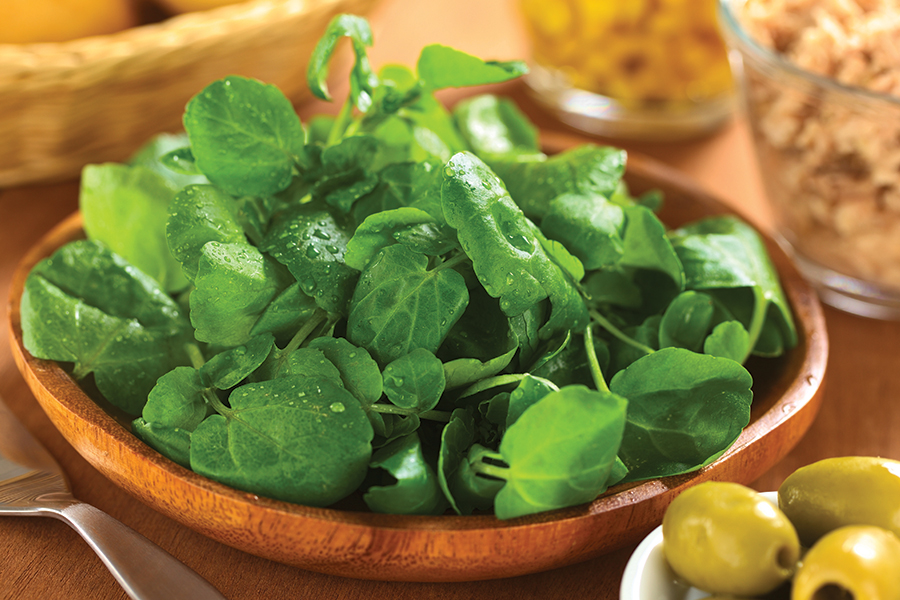From The Optimist Magazine
Fall 2015
Marketing is an art, and more often than not it doesn’t produce the best results for the consumer. Take the case of kale. In recent years, this vegetable has become the darling of the health-conscious movement. There’s hardly any healthy-cuisine restaurant that doesn’t offer some kind of kale salad on its menu. But what’s so special about kale? When it comes to nutrients, you’re better off eating spinach, chard or lettuce (see chart).
Kale can even be harmful. Todd Oppenheimer recently wrote in Craftmanship magazine about an emerging link that may exist between heavy kale consumption and health problems. He tells the story of alternative-medicine researcher and molecular biologist Ernie Hubbard, who has a clinic in Marin County, just north of San Francisco—which probably has the highest kale consumption per capita in the world. Hubbard discovered that many of his health-conscious patients who were complaining about chronic fatigue, skin and hair issues, neurological disorders and digestive problems were also heavy eaters of kale. Tests showed higher-than-normal levels of a toxic heavy metal called thallium in their blood.
Subsequently, Hubbard found a peer-reviewed paper by Czech researchers from 2006 that gives evidence that kale is really good at taking up thallium from the soil. Soil samples in Marin County showed levels of thallium that were higher than average. When Hubbard’s patients stopped eating kale, their symptoms improved. Of course, this doesn’t mean that all kale grown in other places is taking up thallium in similar quantities. If the thallium is not in the soil, the kale will be fine. But why would you eat kale in the first place?
Enter watercress. According to one of the researchers studying it, Professor Ian Rowland of the University of Ulster in the United Kingdom, it’s “a very underrated vegetable.” Watercress is the most nutritious fruit or vegetable known—it has more than twice the overall nutrient value of kale—but hardly anyone is aware of that fact. Restaurants don’t bombard their clientele with watercress salads. According to Dr. Steve Rothwell, probably the only person in the world with a Ph.D. in watercress, this vegetable has more calcium than milk, more B vitamins than black currants, more iron than spinach and more vitamin C than oranges. Eighty grams a day will reduce your wrinkles and improve your skin, but more important, says Rothwell, “it’s also probably the most effective cancer-fighting food known.”
That research keeps pouring in. Many hundreds of scientific reports document the anti-cancer activity of watercress. A 2010 study by Professor Graham Packam, of the University of Southampton in the UK, for instance, showed that eating just one portion of watercress was enough to halt the growth of breast cancer cells. The health benefits come from a phytochemical known as phenethyl isothiocyanate (PEITC), of which watercress is the richest natural source. PEITC has the ability to interfere with a critical function of cancer development. Early-stage solid cancers cannot progress without a blood supply. They need to create new blood vessels—a process known as angiogenesis. PEITC suppresses that process.
Other studies show that watercress can “clean” the lungs of smokers, reducing the toxic effects of tobacco. The vegetable also reduces DNA damage and enhances DNA resilience to oxidative stress, such as that which results from exercise.
Rothwell, who in 2011 founded Steve’s Leaves, a company that grows watercress, and has been eating 80 grams (3 ounces) of fresh watercress every day for some three decades, says that until the late 1800s watercress was regarded as a medicine rather than a food. It’s a “medicine” that far too few people are familiar with yet. According to Rothwell and other experts, 80 grams a day, five times a week, is the perfect prescription.
Powerhouse Fruits and Vegetables (N=41), by Ranking of Nutrient Density Scores1, 2014
1 Calculated as the mean of percent daily values (DVs) (based on a 2,000 kcal/d diet) for 17 nutrients (potassium, fiber, protein, calcium, iron, thiamin, riboflavin, niacin, folate, zinc, and vitamis A, B6, B12, C, D, E, and K) as provided by 100 g of food, expressed per 100 kcal of food. Scores above 100 were capped at 100 (indicating that the food provides, on average, 100% DV of the qualifying nutrients per 100kcal).
Source: Di Nola J. Defining Powerhouse Fruits and Vegetables: A Nutrient Density Approach. Prev. Chronic Dis 2014:11:130390. DOI: http://dx.doi.org/10.5888/pcd11.130390
Item Nutrient
Density Score
Watercress 100.00
Chinese Cabbage 91.99
Chard 89.27
Beet green 87.08
Spinach 86.43
Chicory 73.36
Leaf lettuce 70.73
Parsley 65.59
Romaine lettuce 63.48
Collard green 62.49
Turnip green 62.12
Mustard green 61.39
Endive 60.44
Chive 54.80
Kale 49.07
Dandelion green 46.34
Red pepper 41.26
Arugula 37.65
Broccoli 34.89
Pumpkin 33.82
Brussels sprout 32.23
Scallion 27.35
Kohlrabi 25.92
Cauliflower 25.13
Cabbage 24.51
Carrot 22.60
Tomato 20.37
Lemon 18.72
Iceberg lettuce 18.28
Strawberry 17.59
Radish 16.91
Winter squash (all varieties) 13.89
Orange 12.91
Lime 12.23
Grapefruit (pink and red) 11.64
Rutabaga 11.58
Turnip 11.43
Blackberry 11.39
Leek 10.69
Sweet potato 10.51
Grapefruit (white) 10.47











